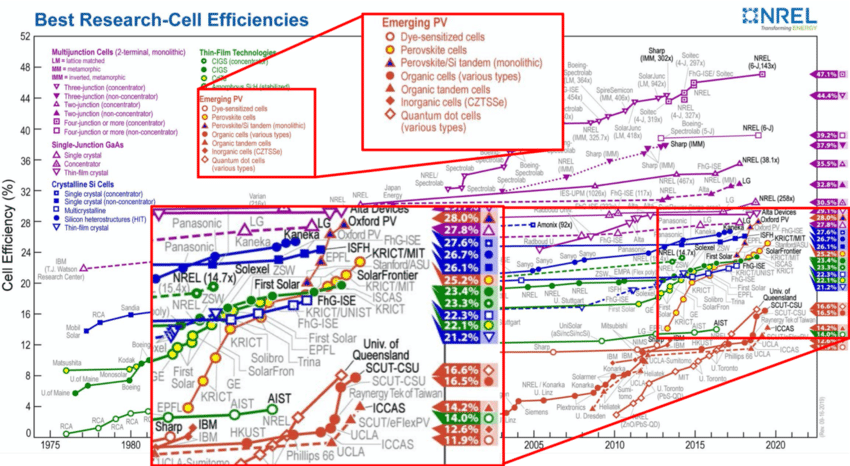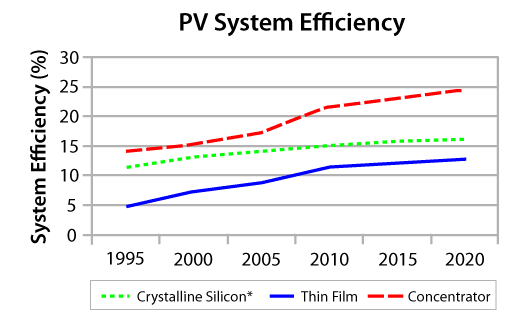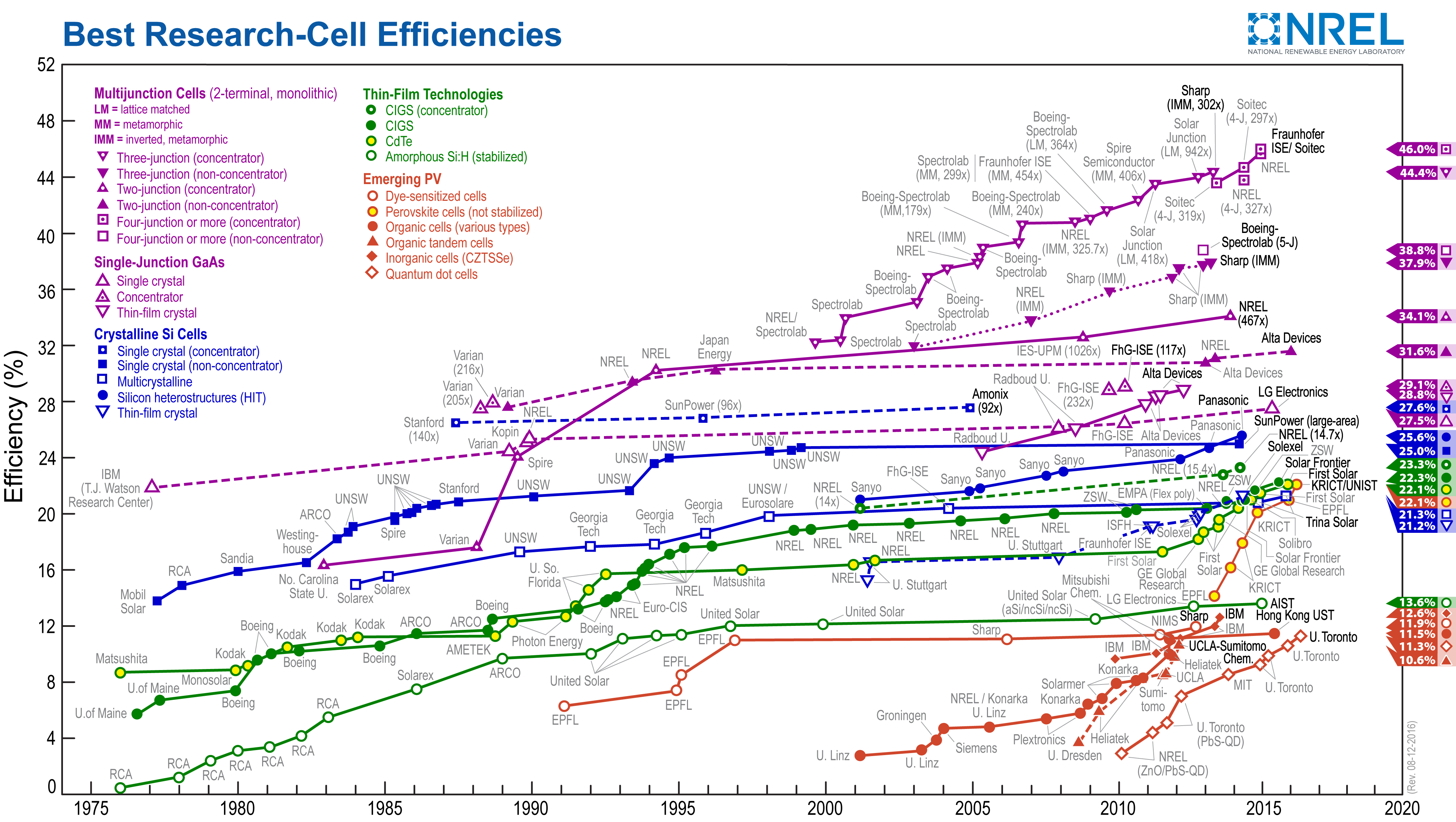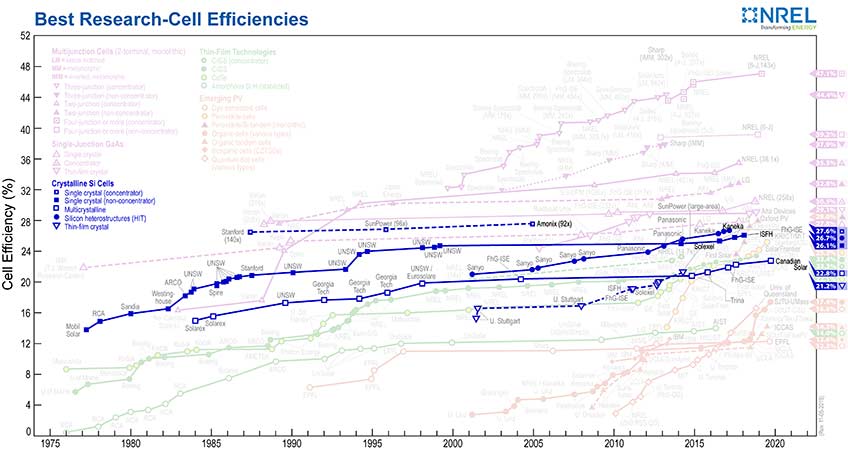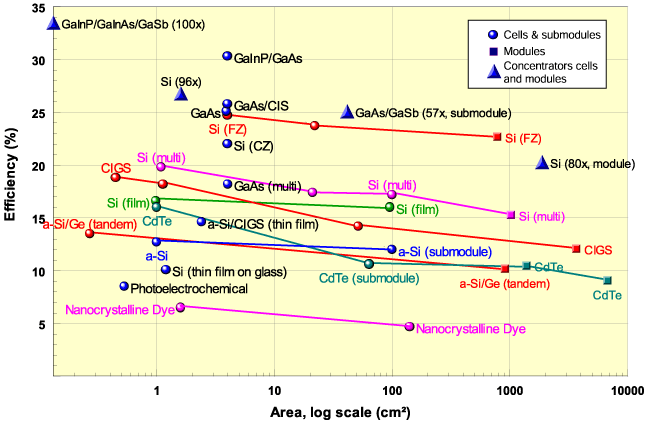Solar Cell Efficiency Chart
Small solar panels Yet you can also find panels of 150 160 or 175 watts.
Solar cell efficiency chart. Download the data file or data guide. The highest efficiency solar panels on the market today can reach almost 23 percent efficiency. Technology-Specific Cell Efficiency Charts.
Guidelines for inclusion of results into these tables are outlined and new entries since June 2020 are reviewed. Youll learn how to predict the power output of a PV panel at different temperatures and examine some real-world engineering applications used to control the temperature of PV panels. Your calculator or cell phone.
See Junctions Band Gaps page. Consolidated tables showing an extensive listing of the highest independently confirmed efficiencies for solar cells and modules are presented. Dye-sensitized solar cell is an efficient alternative to the conventional silicon based solar cells and have been widely considered as a.
Thus the input power for a 100 100 mm 2 cell is 10 W and for a 156 156 mm 2 cell is 243 W. Guidelines for inclusion of results into these tables are outlined and new entries since January. Current solar cell production efficiencies vary by the band gap of the semiconductor material as shown on the left.
Single-junction gallium arsenide cells. 85 rows Best Research-Cell Efficiency Chart. Typical solar panel efficiency ranges from 15 to 20 and the most efficient solar panels commercially available are slightly above 22.
In this issue charts showing efficiency improvements since 1993 are included as. Principal Investigator Cell and Module Performance Measurement. The average efficiency of solar panels falls between the 17 to 19 percent efficiency range.
The National Renewable Energy Laboratory which regularly publishes a chart of the worlds most efficient solar cells has introduced a new chart of record-efficiency solar modules. η is the efficiency. NREL works to advance the state of the art across the full spectrum of photovoltaic PV research and development for diverse applications.
These high-efficiency panels can produce 25 percent more electricity than the lower-tier economy panels that made. Those solar panels used for residential purposes range from 150 watts to 370 watts per panel depending on the panel size efficiency and cell technology. Consolidated tables showing an extensive listing of the highest independently confirmed efficiencies for solar cells and modules are presented.
Solar panels have been consistently increasing in efficiency at about 5 annually since 2010. View the module chart. The input power for efficiency calculations is 1 kWm 2 or 100 mWcm 2.
The best modern production silicon cell efficiency is 24 at the cell level and 20 at the module level as reported by SunPower in March of 2012. Factors that affect solar panel efficiency. The efficiency of a solar cell is determined as the fraction of incident power which is converted to electricity and is defined as.
Some laboratory prototypes have reached efficiency values over 40 but they are still very expensive and not viable for commercial use. In simple terms solar panel efficiency can be described as the conversion. View the cell chart.
10 rows Most other manufacturers currently use the more common P-type mono-PERC cells. Solar cell efficiency chart 2010-2015 22-26. This article examines how the efficiency of a solar photovoltaic PV panel is affected by the ambient temperature.
Our cutting-edge research focuses on boosting solar cell conversion efficiencies. Solar cell efficiency tables Version 58 Martin A. NREL maintains a chart of the highest confirmed.
Manufacturers have been able to create prototype solar panels that are over 30 percent efficient and homeowners on the EnergySage Solar Marketplace regularly receive quotes featuring solar panels with 20 to 22 percent efficiency from solar installers.



